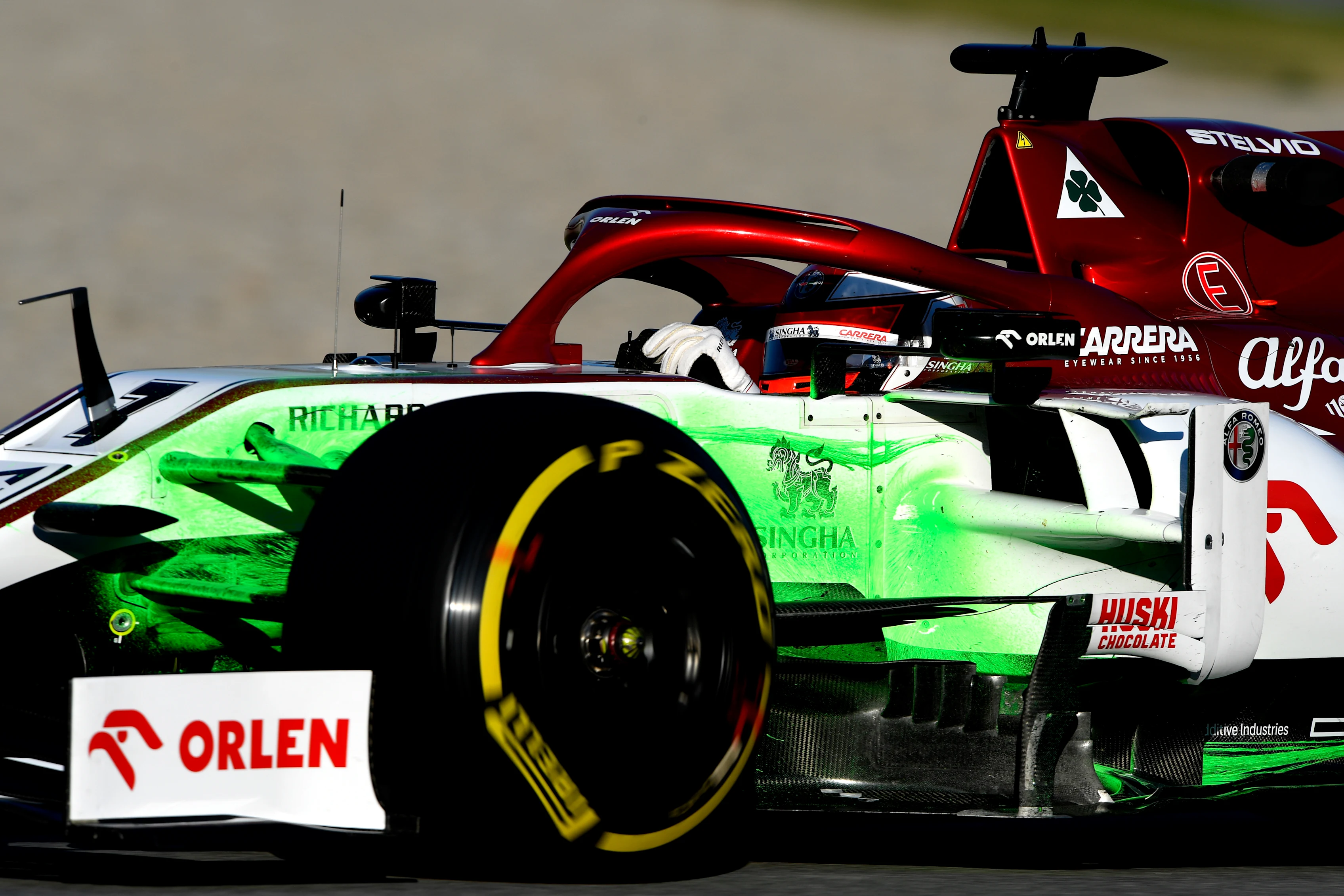Why is correlation a "killer", what are those aero rakes for and what does 'flow-vis' paint actually do – other than looking funky? Ex-Williams and Ferrari engineer Rob Smedley explains all as pre-season testing continues in Barcelona.
What is correlation?
Correlation, in basic terms, is trying to match the data that you measure off the car against your simulator data.
If they do match, then you know that your development, or simulation environment, is good, and you can use that to develop the car. Everything correlates well and you know that you can trust your simulation environment, which is much cheaper and much more efficient in terms of developing a car. You know that something that has given you a gain in your simulation and development environment is going to give you a gain on the real car.
READ MORE: DAS explained – What we know so far about Mercedes' trick new steering system
Where teams have problems is when their development or simulation environment – so CFD [Computational Fluid Dynamics] or wind tunnel – doesn’t describe well what happens in reality (although in truth, no-one’s wind tunnel correlates absolutely 100%). At that point, you’ve got a problem and you’ve got to try and understand where the mismatch is coming from.
It’s the biggest pain in the arse, honestly. It’s just a lot of hard work, because what happens at that point is that, instead of pouring time into development and putting lap time into the car, you’re putting all of your engineering skill and talent into understanding where this correlation mismatch is coming from.
READ MORE: Ferrari SF1000 'definitely a step up from last year' – Vettel
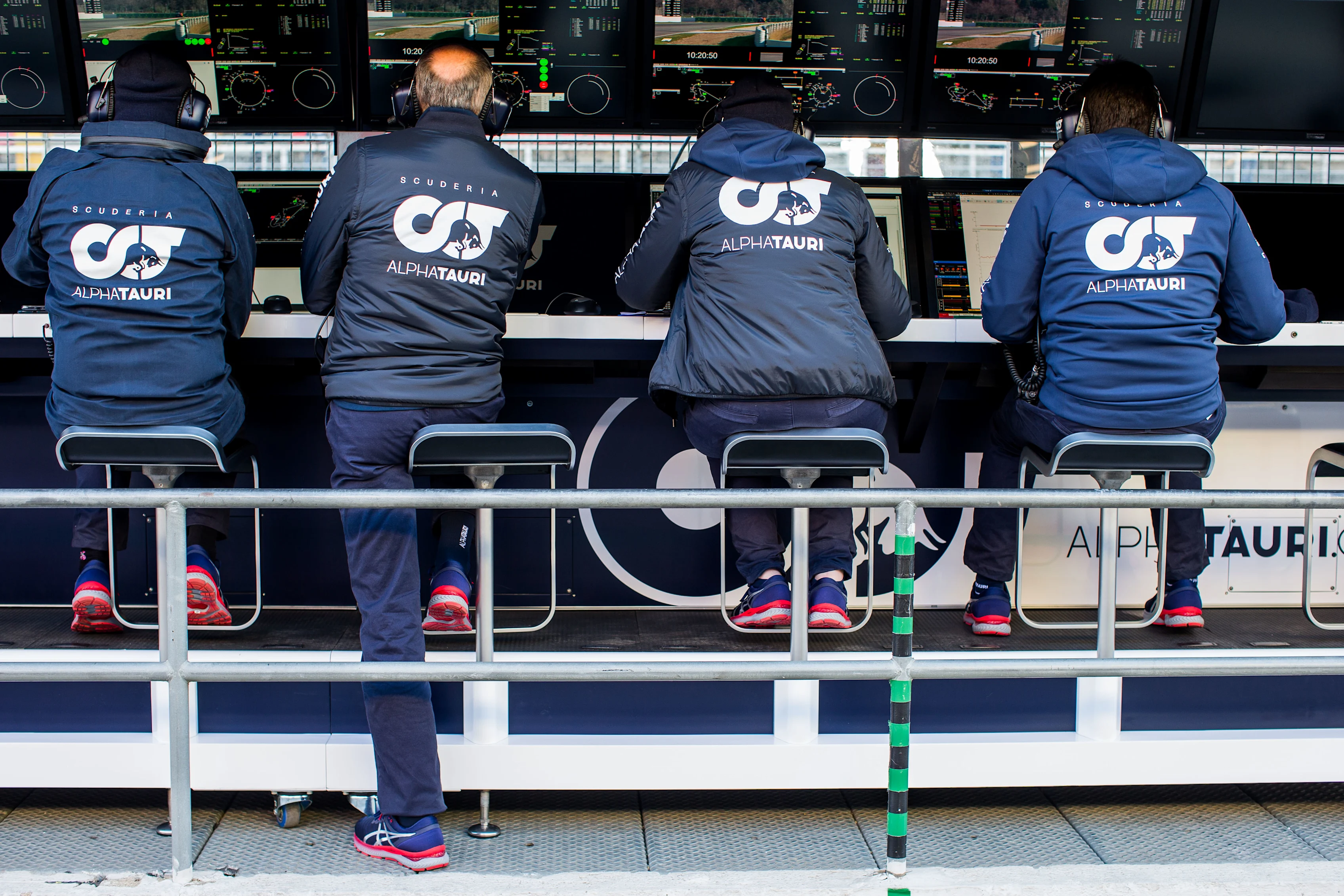
You’ve not only got a car that’s not responding as you expect it to respond – now, you’re getting further and further behind on development, because your rival team that has a car that matches its simulation environment is not only going to be faster than you, but also it’s going to spend its time developing. It’s going to spend its time adding lap time to the car. So you’ve now got a slower car and you’re having to understand that miscorrelation.
READ MORE: Rob Smedley on what teams do on Day 1 of testing
There’s a whole host of experimentation that you need to go through to understand what’s wrong, in order to drag a prescribed data set off the real car and the simulation environment, and eventually you’ll see where the mismatch comes from. Then what you’re actually trying to do is either correct that on the real car, or you’re correcting your simulation environment – it’s not always clear which one is at fault! So it’s a killer, to be honest, in Formula 1 terms.
What are aero rakes?
You see all sorts of weird and wonderful aerodynamic rakes these days – and they’re getting bigger and bigger as the years go on.
An aerodynamic rake is a series of ‘pitot tubes’, which are sensors designed to measure off-body flow structures – and they’re actually quite an old technology! By measuring the dynamic pressure, they can then paint a picture of the flow structures that are coming off things like the front wing, the front wheels – which is all-important – where the vortices are that are coming off the front wing.
READ MORE: The insider's guide to... Technical Directors
Then further downstream, you’re interested in what’s happening coming off the turning vanes, you’re interested in what’s happening on the top body behind the diffuser. So you can paint all of these pictures of the different flow structures and the different vortex structures coming off various parts of the car. That information then goes back to the aerodynamics team, and they can then use that data in order to then optimise and improve the upstream flow structure generation.
Nowadays, the processing of the data that comes back from the aero rakes is very quick – it’s almost real-time. Teams have developed software that takes the raw data and spits out these really interesting images and video files.
There are sometimes more fundamental things that we pick up from the aero rakes that we can’t solve at the track
Some of the stuff, you can act on immediately. So if you’re doing a ‘front wing polar’, for example, which means stepping through from a low angle up to the maximum angle of the front wing, then we’re able to see if that front polar is healthy. Or we can see if there’s a point where the front wing ‘falls over’, as we term it, where we’re not generating the downforce on the front anymore. You might be getting a stall or a semi-stall, and at that point, the information from the aero rakes is telling the race engineers to stay away from that area of running the car.
READ MORE: What the data tells us from Day 2 in Barcelona
Equally, there are sometimes more fundamental things that we pick up from the aero rakes that we can’t solve at the track, and that then goes back to the aerodynamics team and they can deliberate on how to solve these fundamental problems and to put these flow structures in a more optimised position.
What is flow-vis paint?
Flow-vis is a fluorescent powder that we mix up with a light oil, usually paraffin. You paint it liberally on the car, the car then goes out and as it’s moving up to speed and going through a cornering condition, the paint dries as the light oil evaporates and you end up being able to visualise, very clearly, what sort of flow structures you've got.
When we then analyse that, we’re usually looking for things like separation, as in where the flow's separating and we’re not getting decent flow structures across the surfaces of the car. That can then tell the aerodynamicists a lot about what's going on upstream of that, and hopefully that helps them to rectify certain problems on the car.
LIVE TIMING – full coverage of Formula 1 Pre-Season Testing 2020
You’ll often have seen the teams looking to cover a car that’s been running flow-vis with screens when it comes back into the pits, although that's been made illegal this season. The dream for the other teams is to try and get bits of information about a competitor, so the screens just stopped rivals getting pictures of your car with the flow-vis paint on it, which is going to tell a competitor a story about your car, or maybe tell them information which is key to what they want to do as well.
So that's flow-vis: it’s a simple method, but very useful in a track environment, which is such a noisy environment in experimentation terms.
F1 DRIVER INSIGHT: Jolyon Palmer on how to deal with a difficult new car at testing
Next Up
Related Articles
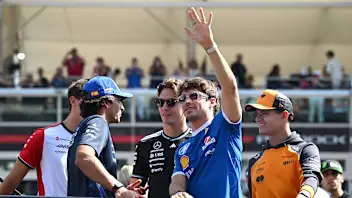 All the 2026 F1 driver numbers confirmed in full
All the 2026 F1 driver numbers confirmed in full.webp) Unlocked‘We have a lot of hopes’ – Vasseur on Ferrari's 2026
Unlocked‘We have a lot of hopes’ – Vasseur on Ferrari's 2026.webp) ExclusiveZhou on why he has ‘high trust’ in Cadillac project
ExclusiveZhou on why he has ‘high trust’ in Cadillac project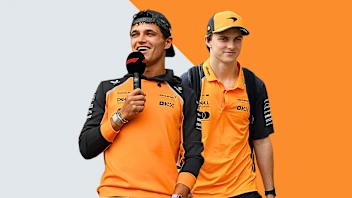 End Of Year Reports 2025McLaren’s best and worst moments from 2025
End Of Year Reports 2025McLaren’s best and worst moments from 2025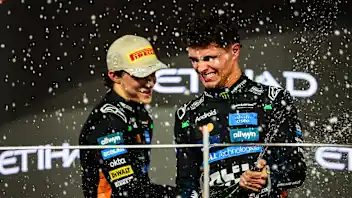 The key moments of an unforgettable 2025 season
The key moments of an unforgettable 2025 season Who are the 2026 F1 teams?
Who are the 2026 F1 teams?
